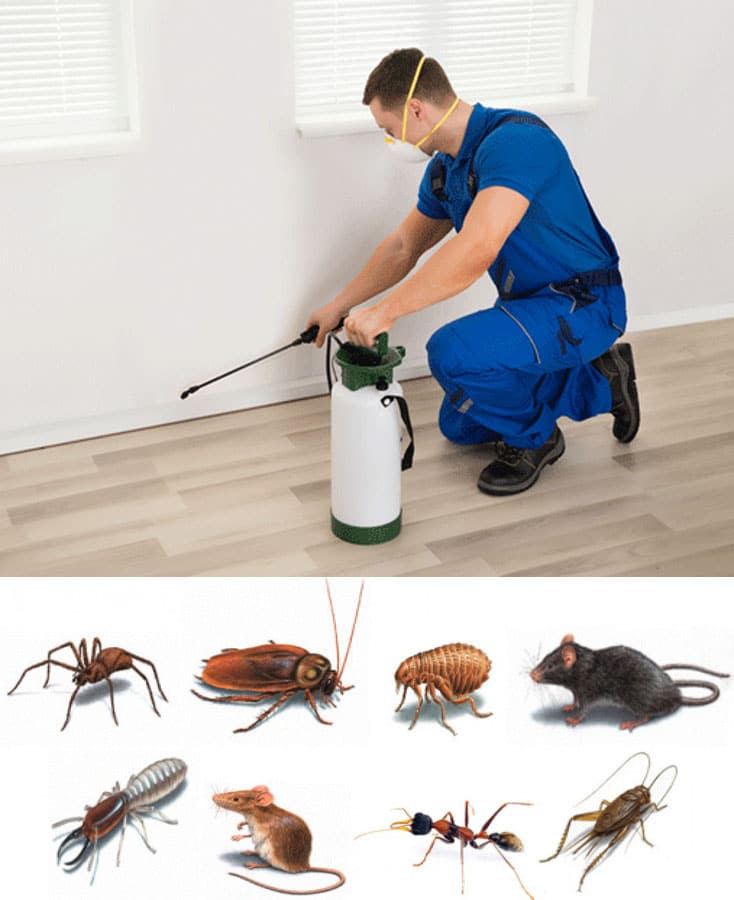A1 Charlotte Pest Control Companies - Your Local Pest Experts
Bed Insect Therapy Breakdown: Contrasting Chemical Vs. Non-Chemical Solutions
In the realm of insect control, specifically when handling the persistent problem of bed bugs, the choice in between chemical and non-chemical treatment services can be a pivotal one. Both techniques supply unique advantages and disadvantages, affecting aspects such as efficiency, security considerations, and total price. By checking out the nuanced details of each approach, a clearer understanding of which course to go after in attending to a bed pest invasion can be acquired.
Efficiency of Chemical Therapies
Chemical therapies for bed bug problems have been commonly recognized for their rapid and powerful efficiency in removing these pests. When considering the performance of chemical treatments, it is crucial to understand that they can give a fast and detailed solution to a bed insect trouble. Expert pest control operators often count on pesticides to target bed bugs at various phases of their life process, including eggs, adults, and nymphs. These chemicals generally function by interrupting the bed pests' nerves, bring about paralysis and eventual death.
In addition, chemical treatments have the benefit of using recurring impacts, indicating that they can remain to remove bed pests even after the initial application. This recurring action is particularly advantageous in combating any type of prospective re-infestations. Additionally, the fast action of chemical treatments can bring alleviation to people encountering serious bed insect invasions, enabling them to gain back control of their home quickly.
Safety And Security Problems With Chemical Solutions
One crucial element that needs mindful consideration when utilizing chemical solutions for bed bug therapy is guaranteeing the safety and security of residents and the setting. Direct exposure to specific chemicals used in bed insect therapies can lead to respiratory problems, skin irritability, or various other damaging reactions, specifically in people with pre-existing problems or level of sensitivities.
Furthermore, the ecological impact of chemical solutions is an additional considerable consideration. Some chemicals used in bed bug treatments may be damaging to useful pests, wild animals, and ecological communities if they seep into the dirt or water systems. It is important to make use of chemical treatments judiciously, following security standards, and taking into consideration much less harmful alternatives to minimize these threats and make certain the efficient and risk-free administration of bed pest infestations.
Benefits of Non-Chemical Methods
Considering the prospective security worries and ecological influence associated with chemical remedies for bed insect therapy, discovering non-chemical methods offers an encouraging choice with several unique benefits. Non-chemical treatments are eco pleasant, as they do not contribute to air or water contamination, making them a sustainable option for parasite control.
In addition, non-chemical options can be effective in targeting bed bugs, including hard-to-reach locations where chemical therapies may not permeate. Methods such as heat treatment, vacuuming, vapor cleansing, and cushion coverings offer extensive elimination without making use of harmful chemicals. Moreover, non-chemical approaches can be much less turbulent, requiring marginal preparation and enabling for quicker reentry into dealt with areas. Generally, choosing non-chemical bed pest therapy methods not only focuses on safety and environmental management yet additionally ensures comprehensive and effective parasite control.
Limitations of Non-Chemical Treatments

Additionally, non-chemical therapies usually require multiple applications to attain successful removal. This can be lengthy and may not always guarantee full elimination of all bed insects and their eggs, particularly in hard-to-reach or covert areas.
Furthermore, the success of non-chemical treatments heavily relies on appropriate execution and thoroughness, which can be challenging for people without professional proficiency. Insufficient application of non-chemical methods might lead to insufficient elimination, resulting in consistent infestations and the need for extra treatments.
As a result, while non-chemical treatments have their benefits, it is necessary to recognize these constraints and consider them when identifying one of the most effective method for handling bed pest problems.
Expense Comparison: Chemical Vs. Non-Chemical Options
Offered the limitations connected with non-chemical treatments, a crucial facet to examine in the context of bed insect administration is the cost comparison in between chemical and non-chemical options. In comparison, non-chemical therapies like warm treatment or vapor can be more pricey, with prices ranging from $1,000 to $6,000 for a whole home. While the first expense of chemical therapies might seem reduced, numerous therapies may be called for to fully eliminate the invasion, possibly raising the general expense.
Verdict

Thinking about the prospective safety worries and environmental impact linked with chemical options for bed pest therapy, discovering non-chemical methods presents an appealing option with numerous A1 exterminators charlotte nc unique benefits.Offered the constraints linked with non-chemical treatments, a vital aspect to review in the context of bed insect monitoring is the price contrast in between chemical and non-chemical choices. In comparison, non-chemical treatments like heat treatment or vapor can be much more pricey, with costs varying from $1,000 to $6,000 for an entire home. While the preliminary expense of chemical therapies may appear lower, several therapies may be called for to fully eradicate the invasion, possibly increasing the general price.In verdict, when contrasting chemical and non-chemical bed pest treatment choices, it is vital to take into consideration efficiency, safety and security, benefits, constraints, and cost.